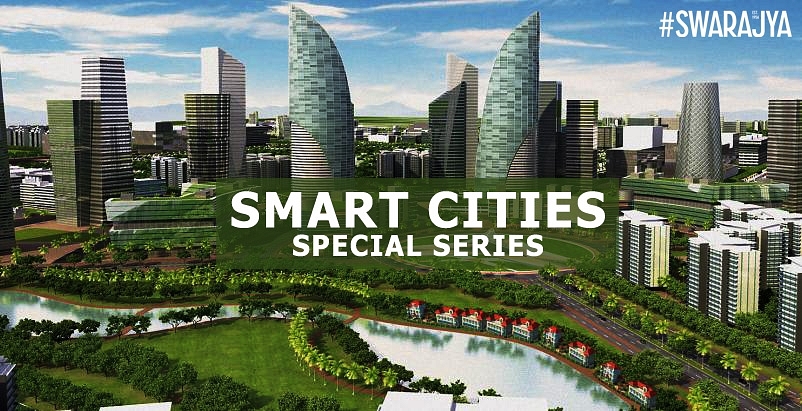Smart Cities
How Technology Can Make Smart Cities Safe
- A big data driven, tiered, open and fault-tolerant architecture can make the task of ensuring safety for citizens easier.

Swarajya Smart City Series
A hundred years ago, only 10 percent of our population lived in cities. Today, over half of the world’s population lives in urban areas. UN has projected that by 2050, almost 75 percent of the world’s population will be in cities.
We are living in what has been termed as the “century of the city” — the century in which the world population goes past a tipping point of more people living in urban areas than in rural areas and the dynamics of cities largely shape our world.
India’s urban population has been rapidly growing from 286 million in 2001 to 377 million in 2011, constituting 31.16 percent of the country’s population. This is expected to reach 590 million by 2030, nearly 40 percent of the Country’s population and contributing 70 percent to the country’s GDP.
As cities evolve to become massive megapolises, the challenges of ensuring safety for the citizens will become increasingly complex. The aspect of safety must be egalitarian in that social status should not be determinants that define the “degree” of safety proffered to citizens.
Safe cities are those that assure their citizenry a sense of security that adds up to an optimal quality of life. History is witness to the fact that cities which provided safety to their citizens have been at the forefront of economic and commercial growth and will continue to lead the charge in their aspiration to become Smart Cities.
The aspect of safety in a smart city straddles multiple areas such as disaster mitigation and management, anti-terror measures, 24-hour surveillance, child and disabled friendly measures, fire safety, community-based security support, early warning systems, resilience to natural and man-made disasters and rapid response teams.
Technology can help in providing energy-efficient street lighting, to systems that allow many different local agencies to view the same data and orchestrate the most optimal response to incidents. Cities, with rapidly expanding populations and overstretched financial resources, need to become more innovative in devising solutions to urban security.
What A Technology Solution To City Safety Requires
In order to predict correctly, the safety system must create links between data in order to generate key insights. Current technologies provide the ability to identify these correlations, which means they can predict possible outcomes before they happen. The correlations of data — and the insights derived out of them — enable government departments to make necessary changes in security policy, security procedures and personnel training.
In order to prevent mishaps, security agencies must have the ability to view data across multiple departments, and thereby chart out a coordinated plan for multiple agencies to team up for an integrated response. Having intelligence inputs of this sort could thereby prevent incidents.
A Typical Surveillance Solution
Surveillance demands technology which can capture, store and analyse data to derive event information together with other intelligence inputs, and provide these views to a wide range of agencies, other government departments, emergency services, and other operations centers.
The ‘’Technology Stack’’ provides a platform that unifies the control and monitoring functions of physical security, building and traffic management, and computer aided dispatch systems to name a few.
Required Architecture
This kind of a tiered, open and fault-tolerant architecture provides for easy repair or routine maintenance of the various system components, the enhancement and introduction of new data sources and analysis/ visualization capabilities, and updates to/future exploitation of the overall services (e.g., the addition of new system APIs for external system use)—all while maintaining ongoing operations.
All data needs to be processed by a centralised data center infrastructure with robust networking to ensure bandwidth-intensive data, such as video, is delivered to the data center efficiently. The virtualised compute and storage systems also provide for very high levels of IT asset utilization, energy efficiency, and the ability to readily scale the system for future growth.
Introducing ElectionsHQ + 50 Ground Reports Project
The 2024 elections might seem easy to guess, but there are some important questions that shouldn't be missed.
Do freebies still sway voters? Do people prioritise infrastructure when voting? How will Punjab vote?
The answers to these questions provide great insights into where we, as a country, are headed in the years to come.
Swarajya is starting a project with an aim to do 50 solid ground stories and a smart commentary service on WhatsApp, a one-of-a-kind. We'd love your support during this election season.
Click below to contribute.
Latest